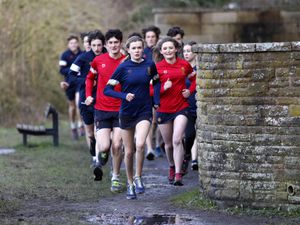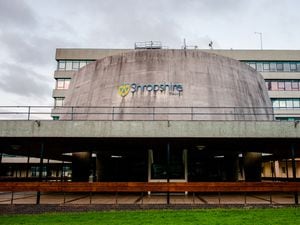County school given international recognition as 'birthplace of cross-country'
A county school has been immortalised in sporting history for its role as the birthplace of cross-country running.

Shrewsbury School has been awarded a World Athletics Heritage Plaque, as well as being placed in the distinctive virtual Museum of World Athletics ‘Indoor Athletics and Out of Stadia Collections’.
The World Athletics Heritage Plaque, a location-based recognition, is awarded for “an outstanding contribution to the worldwide history and development of the sport of track and field athletics and of out of stadia athletics disciplines such as cross country, mountain, road, trail and ultra-running, and race walking.”
The school is alongside Japan’s first Olympic champion and the New York City Marathon, as well as five other sites across Europe and South America, in receiving the recognition.
The Royal Shrewsbury School Hunt (RSSH) has been awarded the plaque under the ‘culture’ category.
The sport of cross country running originated at Shrewsbury School in 1819 with the creation of the “paperchase” game across countryside.
The first surviving ‘Hound Book’ of the RSSH, dating back to 1831, records the runs of the school’s hunt of that year.
The most historic of these runs – the Tucks – is still raced today and might be regarded as the origin of modern cross county running.
Headmaster, Leo Winkley, said: “We are delighted and deeply honoured that World Athletics has recognised Shrewsbury School’s unique place in the history of athletics as the birthplace of cross-country running. The sport continues to enjoy a central role in our sporting programme with girls and boys training and competing alongside one another in the Shropshire Hills and across the UK.”
The RSSH is one of many sports offered at Shrewsbury School.
The club was established after Headmaster Dr Butler rejected a request from boys to form a mounted fox-hunting club.
An alternative club was formed, with boys running across the Shropshire countryside instead of horses and hounds, but still uses much of its terminology.
Many of the old traditions remain today: the captains of cross-country are known as the Huntsman and Huntswoman, their two deputies being the Senior and Junior Whips, and the younger runners being known as the Hounds.
At the start of the school races – including the annual whole-school Tucks run and the Inter-House Steeplechases and Paperchases – the Huntsman goes to the front of the pack of runners and issues the rallying cry “All hounds who wish to run, run hard, run well, and may the devil take the hindmost”.
In recent years the club has swelled in numbers, with around 70 boys and girls regularly training and competing with the RSSH each season both in the UK and internationally.
As well as receiving the plaque, a RSSH singlet will feature in the launch of the 3D virtual Museum of World Athletics ‘Indoor Athletics and Out of Stadia Collections’, another exceptional honour.
The new displays – supported by text in English, French, and Spanish languages, and illustrated by stunning photographs and videos – celebrate the history of indoor athletics, cross country & road running, and race walking, dating back to the early 1800s.





